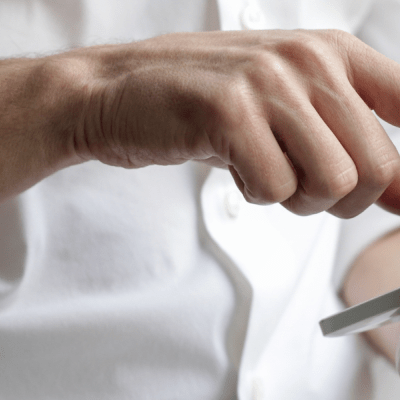I recently traveled out of town and upon landing back in Atlanta, the captain came over the PA system to announce the weather. I was not excited to hear that the temperature outside was much colder than the place I had just arrived from. I quickly opened my Nest app on my phone and turned the heat in my apartment on within seconds, all from my window seat on the plane. I arrived home to a perfectly warm apartment and had to do next to nothing to get it that way.
This got me thinking. With the rapid increase of interest in consumer smart devices, especially in the fitness and home automation fields, we as consumers are relying more and more on our mobile devices as extensions to these IoT products. Our phones have become a central “hub” of connectivity between different aspects of our daily lives. This presents us with a new challenge when designing mobile applications.
Unlike designing for singular applications, where we might only need to worry about the user interface (UI) for one screen on a mobile device, we now have to take into consideration multiple screens, sensors, and displays, as well as how each piece interacts with one another. Users need to be able to control various devices with different functionalities without feeling overwhelmed by contrasting user interfaces. Not only do devices need to virtually connect to one another, but the UI between all of these connected devices also needs to be cohesive in order for the user to use it comfortably and efficiently.
After working on the design for a couple of these IoT products, I’ve learned a few go-to rules that help with better usability.
1. Keep UI consistent across all devices
It’s safe to say that in general, people are more comfortable with things that are familiar to them. When using an application that functions across multiple devices, it is important to keep the UI consistent so it’s not a shock to the user when they switch devices.
Example: The physical Nest thermostat has a round design and is turned left or right to increase or decrease the temperature. The in-app UI mirrors that same round motif and uses the same icon indicators that the thermostat interface uses. Users can adjust the wheel on the home screen of their app to increase or decrease the temperature from their mobile device much like they do on the physical thermostat itself.
2. Create an easy-to-follow onboarding process
The main functionality of IoT products is their ability to display information and connect across multiple devices for a better user experience. If these devices are never connected, they lose their purpose altogether. With that in mind, an easy-to-follow onboarding process for any IoT application becomes extremely important. Being able to set a product up without issues can make or break its usability.
3. Make the experience intuitive
A big draw to consumer IoT products is how they make simple tasks in life easier. When products are catered to the user’s routine or whereabouts, it makes for a better experience overall. It’s important when designing for IoT that the user’s experience is personal and useful in the moment of need.
Example: The Apple Watch includes functionality that prompts users to stand when they’ve been sedentary for a while. The product is taking into account the user’s actions in real life and catering messages and prompts towards them in a timely manner.
As IoT products continue to become more popular and push the limits of usability, it’s important to keep these ideals in mind. With this new challenge comes the opportunity for an entirely new way of thinking.

